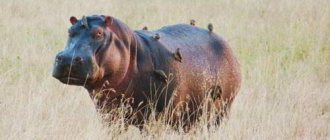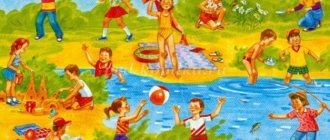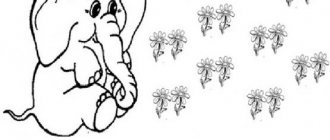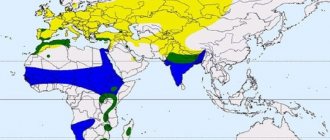Summary of educational activities for the development of speech on the topic “Transport” in the senior group.
The teacher asks 2 children to describe transport
, and say on what
transport
Dunno will deliver his cargo.
Educator: Now children, try to name the object affectionately:
-Airplane (airplane)
; car, ship...
Great, you made me happy again. And now, we will have a little rest and new, interesting games await us.
Finger gymnastics “Chauffeur”
Have your hands ready, look carefully and repeat the movements and words after me.
The driver worked all day (rib-palm)
He is tired and dusty (imitation of shaking off dust)
He carried bricks and clay (bend fingers one at a time)
Rocks, logs and sand.
He transported everything to the construction site (circular movement with fingertips)
And went to the wash (movement of “washing palms”
)
Educator: Listen to the next task. "How does transport "
. I'll start a sentence, you have to finish it:
-The steamer is sailing, and the car... is driving, The tram is moving, and the plane... is flying,
The plane flies, and the bus... travels, the ship sails, and the train... travels.
Well done, you also coped with this task.
The next task is for attentiveness. Game “Flies or doesn’t fly”
Guys, I will show pictures if air transport
- you must show your wings (arms to the sides, and if not, then stomp your feet.
Helicopter - children put their arms out to the sides.
Tram - stomping feet.
Plane, bus.
Educator: Well done!
Children, what we studied today. What types of transport
, You know.
What type of transport
can Dunno use to deliver goods to the post office?
You worked well in class
so I will give you these pictures of
transport for coloring
. Teacher handing out car coloring pages
Developmental task:
Teach children to generalize and classify vehicles: cargo, passenger, fine motor skills, coordination of speech with movement, visual attention and perception.
Educational speech tasks:
write a descriptive story about this toy vehicle using questions:
- practice the practical use of words with affectionate and magnifying connotations;
- practical use of prefixed verbs;
- agree nouns with adjectives in number, gender, case;
- learn to compose a whole from parts (cut pictures).
Corrective task:
train children in the use of feminine and masculine nouns; expand your vocabulary on the topic “transport”.
Educational task:
teach children the rules of behavior in public transport through playful images.
Materials:
toys transport, pictures of transport, cut-out pictures of transport, audio recording “Bus”, panorama of the city with images of transport.
Integrated lesson “Transport. Types of transport" senior group
Integrated lesson “Transport. Types of transport"
Educational area “Cognitive development, communication, artistic creativity, physical development”
Goal:
Continue to familiarize children with types of transport and their purpose.
Objectives: 1. Educational - To consolidate children’s knowledge about types of transport. -Improve speech as a means of communication. -Enrich children’s vocabulary on the topic “Transport”. -Carry out the correct selection of adjectives to nouns, use the plural of nouns. -Continue to teach how to pronounce and memorize finger games. 2. Developmental - Develop children's interest in non-traditional forms of drawing (grains). - Practice accuracy when gluing cereals. -Develop cognitive interest: observation, attention, memory, thinking. -Develop fine motor skills in children through finger games, imitation of types of transport, and working with cereals. 3. Educational - Cultivate interest in the process and result of the work, the desire to complete the work started. move :
I. Organizing time.
Educator: Today we will go on a trip. But first I’ll tell you some riddles, and you try to guess them. Then we will know what we will take on the journey. Listen carefully. A house goes down the street, taking everyone to work. Not on thin chicken legs, but in rubber boots. (Bus). 2. Doesn’t fly, doesn’t buzz. The beetle is running down the street. And two brilliant lights burn in the beetle’s eyes. (Automobile). 3. This horse does not eat oats, instead of legs there are two wheels. Sit on horseback and race on it, but steer better. (Bike). 4. The giant city goes to work in the ocean. (Ship). 5. A fable bird flies, And inside the people sit and talk to each other. (Airplane). 6. Iron huts Attached to each other. One of them with a pipe, carries everyone with her. (Train). Educator. Well done boys! You named a plane, a car, a bus, a ship. How can you call all these cars in one word? Children. An airplane, a ship, a car are transport. II
. Educator. Right! Take your seats at the tables. Educator. There are several types of transport: land, air, water. Before going on a trip, let’s complete the task “Arrange the pictures correctly.” The pictures show several types of transport. It is necessary to place these pictures with transport correctly in the sky, on the water and on the road (on the ground). A child works at the blackboard. Educator. Why were the bus and car placed on the road? Children. Bus and car are ground modes of transport. Educator. The motor ship and boat were placed on the water (ie, in the picture). Why? Children's answers. Motor ship and boat belong to water transport. Educator. Why were the plane and helicopter placed in the sky? Children. Airplane and helicopter fly high in the sky through the air. Educator. Well done, right! Educator. Imagine that a landscape sheet is space. -road on land, river and sky. First we will not travel by land transport. Everyone can choose and draw - a car, a bus, a bicycle, a motorcycle - as they wish. For example, I will go by bus (draws an outline with a simple pencil in the lower left corner). Then the path will lie along the river - we need to draw a water transport - a boat or boat on which we will continue the journey (draws in the center to the right of the car) and finally, Let's fly by plane (or helicopter) (draws in the upper right corner). And they returned with it to their favorite kindergarten. This is how our trip around the world turned out. All that remains is to color the drawing with paints, but first we’ll play the game “One - 3.5”. I name the transport and count 1, and you will count 3 and 5. For example:
One car – 3 cars, 5 cars. Children count along the chain, correctly forming the desired word. Ship - Boat - Plane - Bus - Helicopter - Motor ship - Tram - Boat - Bicycle - Motorcycle - Taxi - Train.
Now let's rest a little. We get up little by little. Physical education minute The ship pushed off from the green pier. (hands forward) He stepped back first, (step back) And then stepped forward. (step forward) And swam, swam along the river, picking up full speed (rotational movements of the arms - “motor”) Finger gymnastics . Let's bend our fingers, Let's call transport: Car and helicopter, Tram, metro and plane. All fingers clenched into fists, Five types of transport were named. III .
Educator.
Now start drawing. First, with a simple pencil, we outline a ground vehicle in the lower left corner, then a water vehicle in the center, and an air vehicle at the top right. Then we color our drawings with paints. (in case of difficulties, the teacher provides individual assistance) IV .
What wonderful drawings you made! Olya, tell us what type of transport you traveled by, Maxim, and you? Who remembers what type of transport the boat is? What about the plane? What did you like most about today's assignments? Well done. We put things in order in our places and go to play.
Slide No. 1 Topic: “Transport”
Goal: To clarify children’s understanding of transport (ground, air, water, underground).
Objectives: - expand children’s vocabulary, conversational speech on the topic; - development of auditory perception, attention, visual memory; — development of graphic skills; - the ability to substantiate your judgments, listen carefully to each other’s answers to the end; – develop friendly relationships between children.
Progress of the lesson
To the music, the children enter the hall like a train and stand in a semicircle. Q. Guys, let's welcome our guests. D. Children say hello. Q. Exactly at 9 according to the schedule We have something to do, What will we do, Who will answer me now? D. Every Thursday we have speech development. During the development of speech, we talk, talk to each other, make and guess riddles. Q. And now we will solve riddles and if you name the correct answer, a picture will appear on the slide. Slide No. 2
R. What a miracle - a long house! There are a lot of passengers in it. Wears rubber shoes and eats gasoline. (Bus)
R. Boldly floats in the sky, Overtaking the flight of birds, Man controls it. What's happened? (Airplane)
R. The brothers prepared for a visit, clung to each other, and rushed off on a long journey, only leaving a smoke behind. (Train)
R. I will take you underground at any time of the year and in any bad weather. Very quickly at any hour. (Metro)
A captain leads Him across the seas and waves. He does not swim, but walks and throws anchors into the water. He makes friends with the wave. And he doesn't like bad weather. (Ship)
Q. What do you think we will talk about in class today? D. About transport. Q. Guys, tell me what types of transport are divided into? D. Water, air, ground, underground. Slide number 3.
(a city appears).
Q. Guys, I suggest you go to a city where there is a lot of transport. Get your ears ready. You need to guess what type of transport makes the sound. D. children's answers. V. Well done guys. Now we will play with you. Look at the slide and tell me what type of transport has disappeared? Slide number 4.
Slide number 5. Slide number 6. Q. You guys are probably tired?
I suggest Daria do some physical exercise for a minute. The planes hummed, (rotating in front of the chest with arms bent at the elbows) The planes flew, (arms to the sides, alternately tilting to the sides) They quietly sat down in the clearing, (sit down, hands to the knees) And they flew again, (arms to the sides, tilting to the sides ). Slide number 7.
(Scheme). V. Well done, take a seat.
Guys, since we have a lesson on speech development, I suggest you tell us about any type of transport presented to you according to the diagram. D. Children's answers. Q. At the end of our lesson, I suggest you go to the tables and write a graphic dictation. Everyone knows what it is. I'll ask Eva to do gymnastics for our fingers. One, two, three, four, five - We will count the transport. Bus, boat and moped, Motorcycle, bicycle, Car and plane, Ship, train, helicopter. (Clench and unclench your fingers, starting with the left little finger). Children perform graphic dictation. At the end, slide number 8 is shown.
(image of the car) Bottom line. IN
.
What did we talk about today? Which task did you like best? What task caused you difficulty? Guys, will you share your impressions with your friends and parents? Since you were great, I prepared a surprise for you. Only the best receive medals, and you were one of them today. Slide No. 9
Summary of GCD in the senior group “Modes of Transport”
Summary of GCD in the senior group.
Topic: “Types of transport. Professions of people working in transport."
Program content
: - expand children’s understanding of the classification of modes of transport depending on the environment of movement and destination;
-continue to formulate concepts: ground, air, water; cargo, passenger, special;
- consolidate knowledge about the professions of people driving vehicles; -develop the mental and speech activity of children using visual modeling technology.
Activating the dictionary:
Conscientious, hardworking, diligent, polite, responsible, courageous, skillful, vigilant, disciplined; water, air, land, underground, passenger, cargo, special, names of transport professions.
Equipment:
— Handout subject pictures depicting a variety of vehicles. -Canvas “Sky – earth – water”. -For modeling: circles symbolizing modes of transport (blue – air; black – ground, underground; blue – water) – with a diameter of 15-17 cm; circles - symbols of modes of transport depending on the purpose (yellow - passenger, brown - cargo, red - special, rescue) - with a diameter of 5-6 cm.
Preliminary work:
-Examination of subject and plot pictures on the topic “Transport”, conversations on them. -Observing transport while walking. — Excursions “Journey to the land of road signs”, “Cars on the streets of our city”. -NOD “Road rules are reliable rules.” — Selection of a library and creation of a card index of poems and riddles about transport. — Creation of a corner of educational games on the theme “Transport”: puzzles, board games (“Assemble a car or plane,” “Fix the equipment,” “What’s extra,” cut-out pictures “Transport”) — Director’s game “Dispatcher” using sets of different pictures types of transport. — Coloring pictures with pictures of vehicles. — Exhibition of children’s crafts made from natural and waste materials together with parents on the theme “Transport.”
GCD move:
Educator
reads a poem: “The train is moving, the train is rushing, its wheels are knocking.” A river flows under the mountain, and there is a steamboat on the river. A car is driving along the highway; it has large tires. A plane rushes into the sky, inviting all its friends to fly. He carries cargo and people, what is this - tell me quickly?
-What do you think we will talk about in class today? Yes, that's right, about transport. What is transport? (This is something you can use to move around and transport cargo). Game
"Flies, swims, rides." (
Game task: to consolidate in the minds of children the idea of types of transport according to the environment of movement.)
- Listen to the rules of the game. I will ask riddles about transport, and you must think and guess them correctly. Riddles-pictures are on your tables, the answer must be attached to the canvas “Sky, earth, water” ( Riddles about
a bus, train, truck, subway, plane, helicopter, rocket, boat, motor ship, submarine
) - There are different types of transport: -What's floating?
Boat, cutter, yacht, sailboat, ship. - What's going on? Bus, bicycle, car, truck, train, motorcycle. - What flies? Rocket, airplane, helicopter, airplane, airship. Educator:
- What is the name of a vehicle that moves on water? (Water transport). What is the name of a vehicle that moves through the air? (Air transport) - What is the name of transport that moves on the ground? (Ground transport), underground? (underground)
Each type of transport will be designated by different colors (the teacher attaches large circles to the board): blue - air, black - ground, underground, blue - water.
Didactic game
“Confusion”
1) We fell in love with air transport, 2) Cars fly faster than all birds. 3) Doctors take us all to work in the morning. 4) We flew to the Black Sea in May by tram. 5) Today we were brought to kindergarten in a car - just great! (Children point with their hands and answer in unison: yes, yes...... no, no)
Educator:
— Think carefully and answer, why do people need transport?
(Children's answers). — Cars were invented and made by people to make their work easier, to move long distances themselves and to transport heavy loads. To operate a machine, you need to know a lot. — What do you think is how machines can work and move? (Children remember details of an airplane, car, helicopter, train). ( exhibited: airplane, helicopter, truck, train, trolleybus, motor ship)
Didactic game
“What would have happened?”
What would happen if...the car's doors disappeared (the car is rushing at high speed). ...gas tank gone? ...the headlights are missing? (at night, in the fog.) ... would the bicycle lose its pedals? ... the plane's wings disappeared ... the seats in the cabin disappeared? ... the excavator has lost its bucket? ... the truck body is missing? ... the boat's oars are missing, and the boat is in the middle of the lake?
Educator: -
We found out: in order for a car to move, it needs a motor, gasoline... and what else? After all, she won’t go on her own! (Children's answers....) - Of course, we need a person to drive the car, but what is this person called?... Driver. Let's remember the professions that are related to the management of vehicles?
(Children's expected answers: Driver - drives a car, conductor - distributes tickets for travel, auto mechanic - repairs cars, taxi driver drives a taxi, tractor driver works on a tractor, crane operator on a crane, etc.). -What should these people be like? ( attentive, brave, etc.)
All the roads are familiar to me, I feel like I’m at home in the cabin. The traffic light is flashing for me, He knows that I am... (Children's answers).
-Yes, this is the driver. The driver or, as he is also called, the driver. What qualities do you think a good chauffeur or driver should have? What should he know and be able to do? (Children's answers) But the most important thing is that the driver must know the traffic rules very well, because the safety of both passengers and pedestrians on the roads depends on this. It is very important!
-What is the name of the person who flies the plane?: The man who flies the plane is called a pilot. -Pilot, or pilot. What is a pilot flying a plane like? He must be brave, courageous, skillful. By analogy, we find out who controls different types of transport: train, ship, rocket, bicycle.
Game
“Name the profession”
Who drives a bus or a car? (attentive driver) Who flies on an airplane? (brave pilot) Who controls the train? (sharp-eyed driver) Who flies the rocket? (skilled astronaut) Who controls the ship? (conscientious captain) Who rides a motorcycle or bicycle? (brave motorcyclist, disciplined cyclist) Who flies a helicopter? (responsible pilot).
Physical education lesson:
-
Imagine, guys, that we are traveling on various types of transport, now we will depict it.
The pilot and I will fly. Hands to the sides, we send the plane into flight. Left wing forward, right wing forward, One, two, three, four - our plane flew. By car we drive fast, fast, (hands hold the steering wheel, turn the steering wheel) The train rushes at full speed (arms bent at the elbow, train movement) Chuh-chuh-chuh-chuh! We take the oars in our hands and quickly row towards the shore. A boat has landed on the shore. We will jump onto the shore deftly. And let's jump across the lawn Like bunnies, like bunnies.
Educator
: — Transport is used for movement on land, water, air, for the transport of passengers and cargo.
Can we divide ground transport into groups depending on its purpose? (Children's answers...) Teacher
(sums up the children's answers): - Yes! Transport can be: passenger, cargo, special. Children, at the teacher’s suggestion, independently reveal the purpose of each of these types of transport and name the vehicles (at the same time, the children’s answers are translated into a diagram by the teacher):
-Passenger transport is busy transporting passengers, i.e. people: buses, trams, trolleybuses, taxis, trains, planes, sea liners, etc. -Cargo – transports cargo: trucks, freight trains, airplanes, ships, etc. (the explanation is accompanied by showing illustrations and photographs of transport). — Special transport is needed for very important work. They are called by telephone if urgent assistance is required: a fire truck, an ambulance, a police car. What phone numbers are dialed in case of a fire? Sick? What if something happened?
Air and water transport are also divided into types according to purpose. The diagram is drawn up as follows: for each large circle, indicating the type of transport depending on the medium of movement (black - ground, underground; blue - air; blue - water), smaller circles are attached (yellow - passenger, brown - cargo, red - special, rescue )
Didactic game
“4th extra”
(Working on cards - mutual testing in pairs): consolidating and testing children’s knowledge on the topic).
Summing up the lesson using the diagram.





